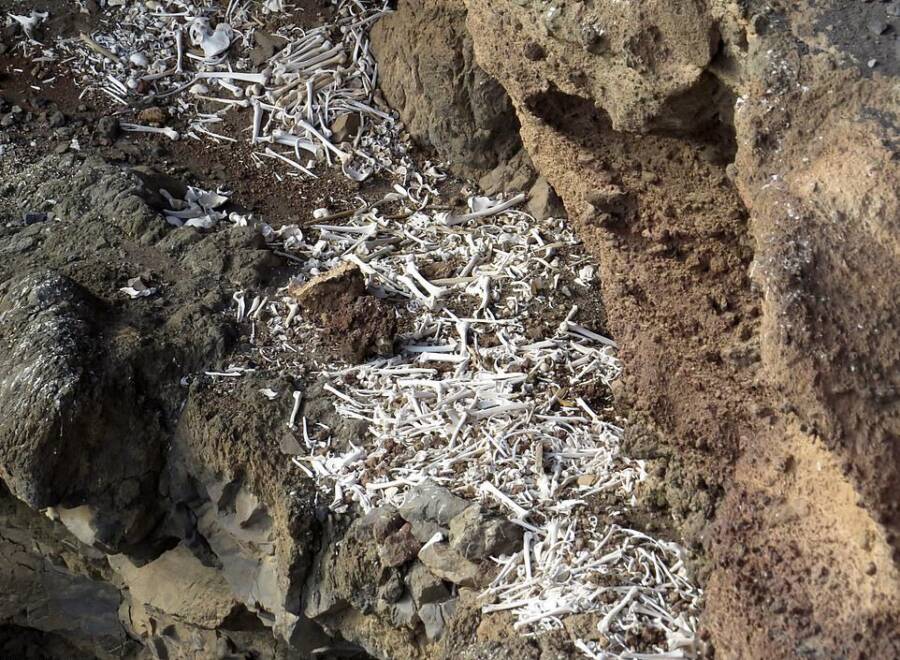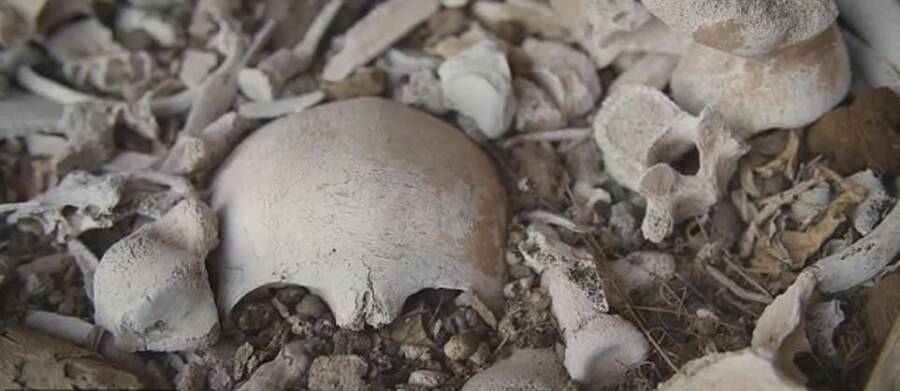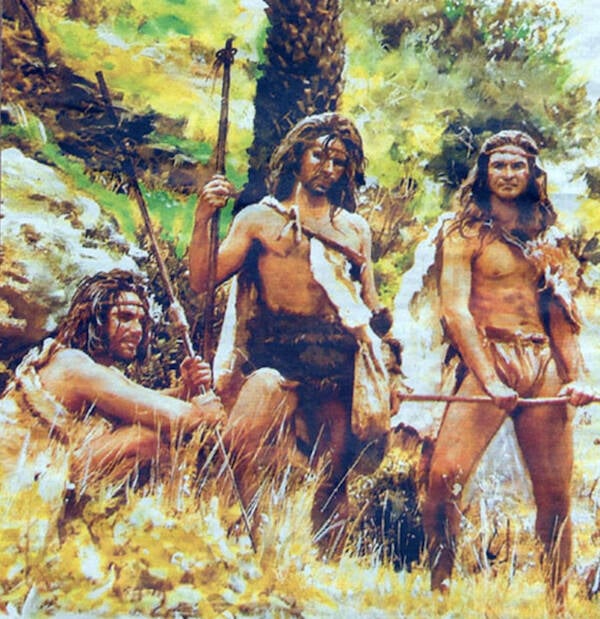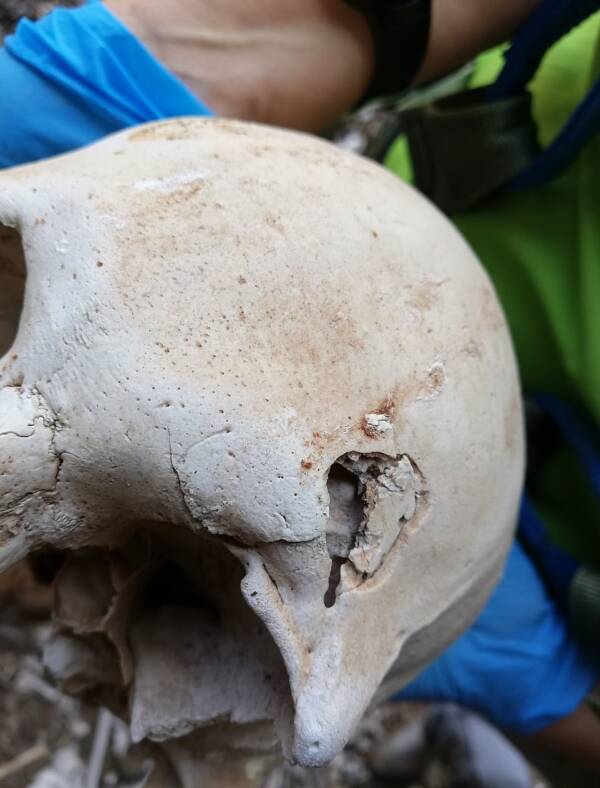There are around 1,200 archaeological sites on Gran Canaria in the Canary Islands. This one, however, contained the remains of aboriginal Guanche newborns.
CEN / Cabildo de Gran CanariaThe man stay on consist of finger cymbals from 62 adult Guanche people and 10 newborn — the latter of which have never been found before .
With technological advancements come new chance to rediscover our past . For archaeologists on Gran Canaria island , that means using drones to come up the cadaver of 72 people from the pre - Hispanic Guanche civilization in a cave that date back to between 800 and 1000 A.D.
harmonize to theNY Post , the mummified remains were foundentombed in the Guayadeque ravine and consist of 62 grownup skeletons and 10 newborn . A 2017 genome - wide data labor confirm the Guanches were the original inhabitants of the Canary Islands and likely uprise in North Africa .

CEN/Cabildo de Gran CanariaThe human remains consist of bones from 62 adult Guanche people and 10 newborns — the latter of which have never been found before.
historiographer consider the civilisation was both ethnically and culturally absorbed when the Spanish arrived in the 1400s and colonize the region . This late discovery , help by the function of an unmanned aerial fomite , has since provide researchers with unprecedented perceptiveness into Guanche refinement .
CEN / Cabildo de Gran CanariaSome thought the squad ’s aerial picture taking of the remains was fake , because there were so many bones .
“ There are many burial caves in Gran Canaria , but not many like this one , ” say archaeologist Veronica Alberto . “ The uncovering of the new-sprung persist is crucial as they were not included in late finding until very recently . We know now they can be discover in these types of cave burials . ”

CEN/Cabildo de Gran CanariaSome thought the team’s aerial photography of the remains was fake, because there were so many bones.
The radical of resourceful amateurs hollo itself “ El Legado , ” and was mold by Ayose Himar Gonzalez , Jonay Garcia , and Jesus Diaz . Once the drone located the cave , Alberto and her peers had to come down 75 feet to progress to it .
“ We were flying a dawdler and we took some pictures of the cave , ” Gonzalez say . “ It is in a very difficult place to get at and you need to mount a cliff to hand the situation . the great unwashed recollect the photos were fake because of all the bones there ! ”
CEN / Cabildo de Gran CanariaThe lay to rest remains likely go to Guanche people of high society , as low course of instruction were buried in the dirt .

CEN/Cabildo de Gran CanariaThe entombed remains likely belonged to Guanche people of high society, as lower classes were buried in the dirt.
In addition to the ancient human remains , the team discover traditional burial shrouds made of veggie fibers and animal cutis .
“ We can support that all the pre - Hispanic the great unwashed in the Canary Islands were prepared the same way for the sepulture ceremony , ” Alberto explained .
The Guancheswere hunter - gathererswith a archaic noesis of agriculture . They live in cave and hutch and embalmed and mummify members of the community of interests with high social esteem similarly to the Egyptians .

TwitterThe Guanche people were hunter-gatherers with some knowledge of farming. They developed a language of whistles to communicate across the ravines and valleys of the Canary Islands.
TwitterThe Guanche citizenry were hunter - accumulator with some knowledge of farming . They developed a language of whistles to commune across the ravine and vale of the Canary Islands .
While these respected members were carefully inclined and entombed in caves when they died , those in lower classes were simply sink in the ground . The website of the find is only one of 1,200 archaeological internet site in Gran Canaria , but alone because of the newborn remains .
Though the “ El Legado ” team discovered this cave in June 2019 , the group decided to stay its report findings out of an copiousness of caution , fearing that the land site would be vandalized before they could do their job properly .

CEN/Cabildo de Gran CanariaThe team found numerous traditional burial shrouds made of vegetable fibers and animal skin.
“ The cave should be closed off and carry on with the bones leave behind there to respect the site , ” say Gonzalez . “ We decided to report it because we want the local sureness to preserve and respect it . ”
CEN / Cabildo de Gran CanariaThe squad found numerous traditional burial shroud made of vegetable fibers and animal tegument .
Perhaps most interesting is the Guanche linguistic process ofSilbo ( or Sylbo ) Gomero . This was developed long before the Spanish get in and was used to communicate through whistles across the ravine and valley of the island .
Around 22,000 people today use the language , which turn Castilian Spanish into pennywhistle . This ancient method essentially uses “ two sing vowel and four consonant , ” with the speech sound able of traveling for up two nautical mile .
Hopefully , this new breakthrough will shed even further light on the beliefs and practice of these ancient and fascinating hoi polloi .
Next , say aboutthe discovery of pre - human remainsthat suggest the early human came from Europe , not Africa . Then , get a line aboutthe gallon - sized jars of human clay including baby find discovered in a Florida crawlspace .